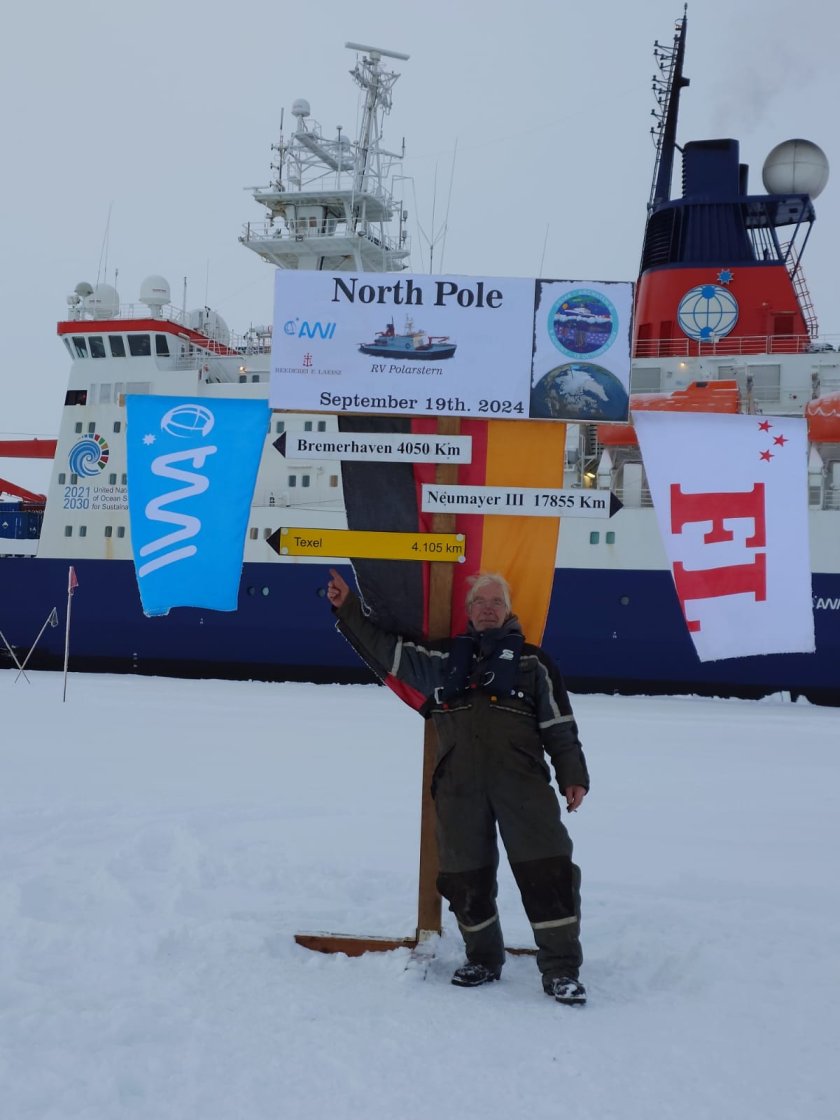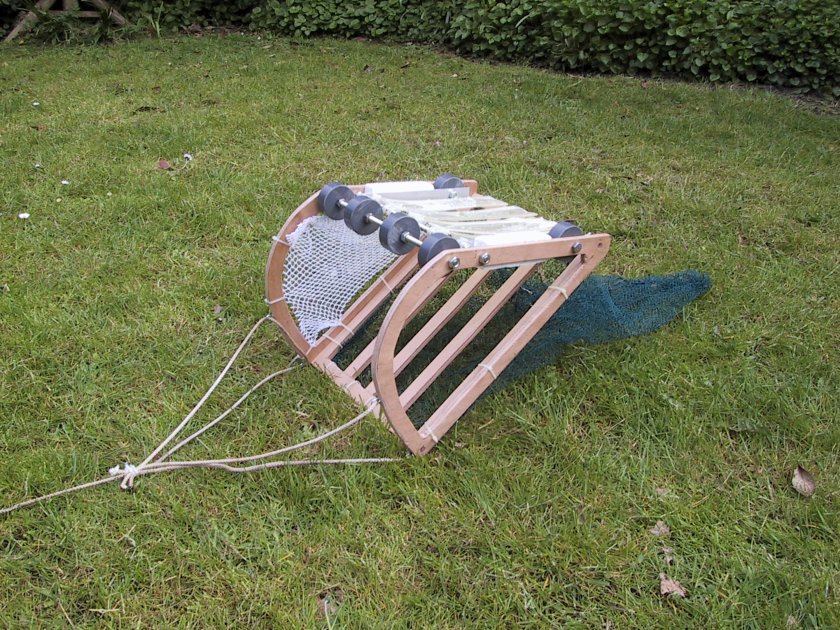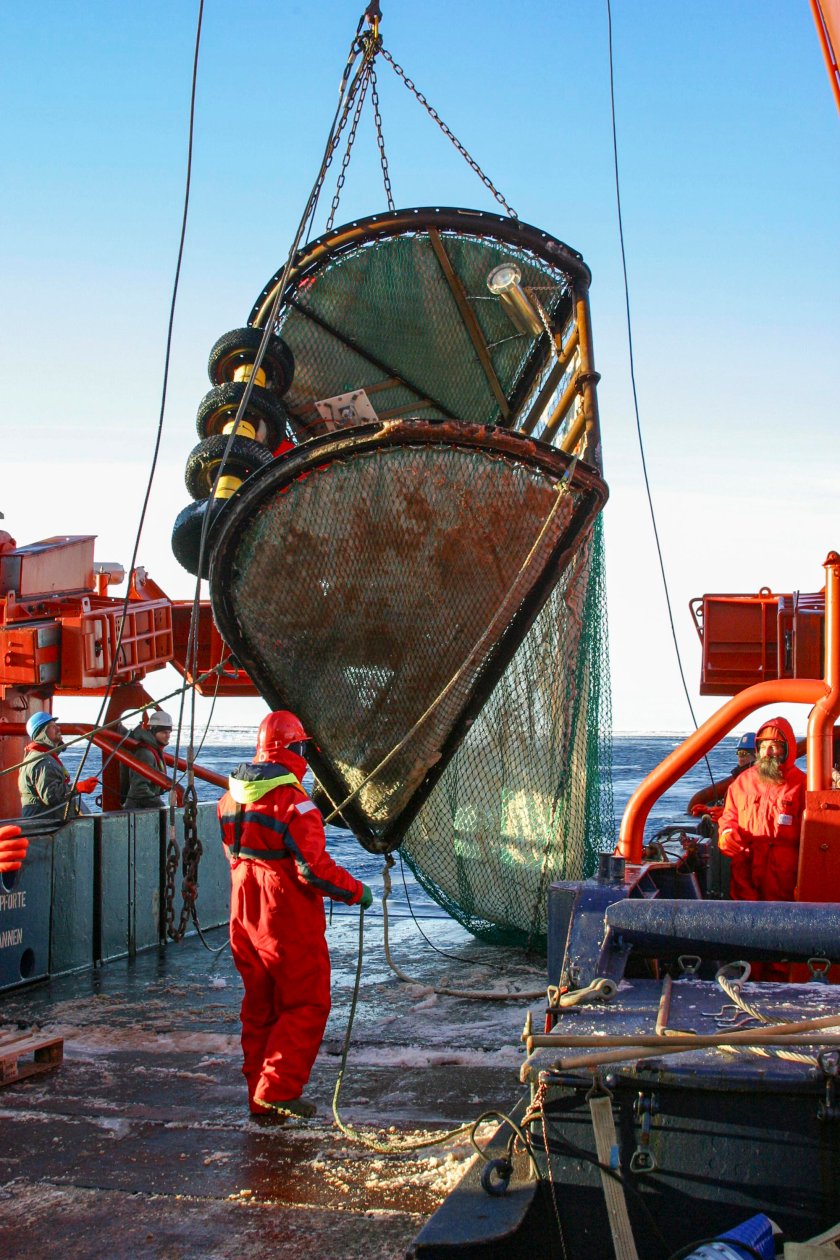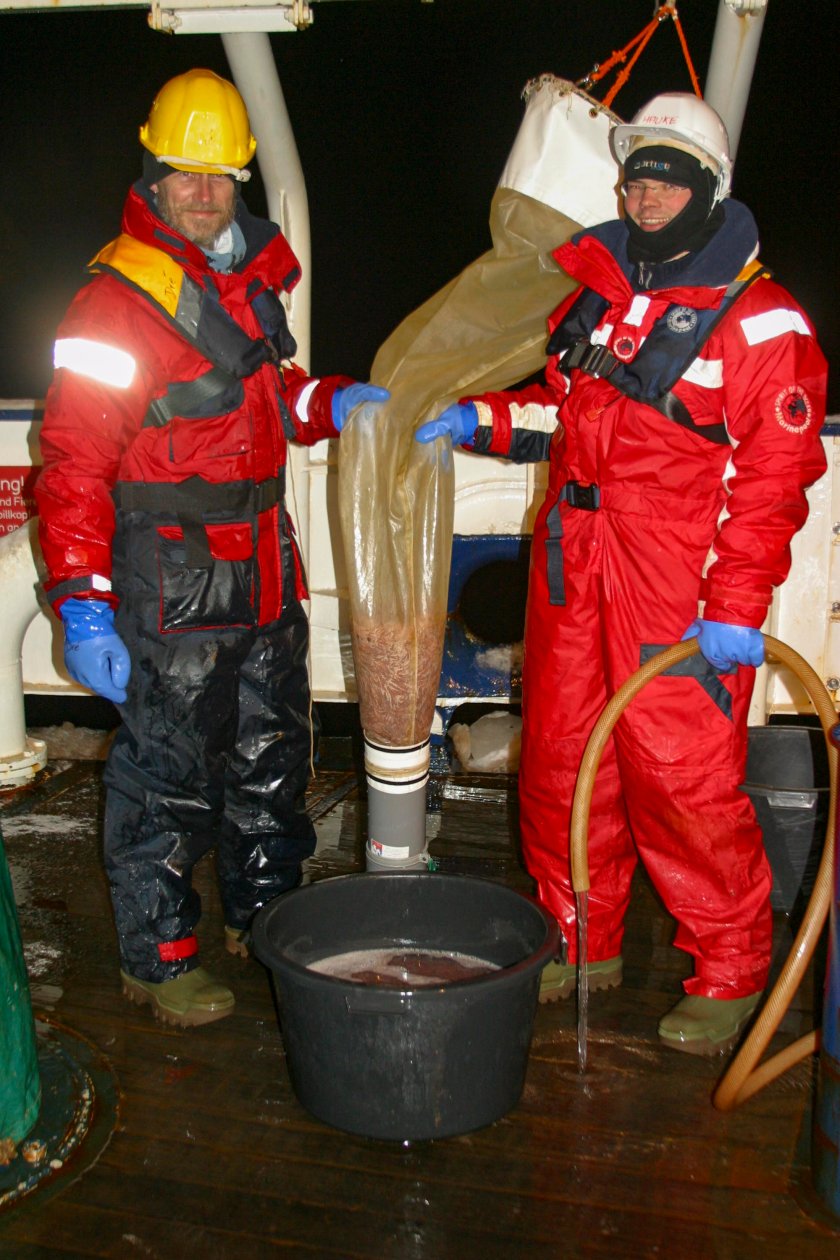
category_news
From idea to breakthrough: twenty years of SUIT changes polar research
Researchers from Wageningen Marine Research and partners, including the Alfred Wegener Institute, returned in September from an expedition to the central Arctic Ocean on board RV Polarstern. During this trip, they collected samples to continue research on Arctic cod and learn more about the distribution of fish in this area, following up on a previous EU research project. To do this, the Polarstern went deep into the Arctic Ocean and reached the geographic North Pole. For sampling, the researchers used several methods, including the Surface and Under-Ice Trawl (SUIT), which allows sampling of the surface water and the underside of sea ice. This instrument marked its 20th anniversary during the expedition.

The idea was initially met with scepticism by many researchers; a research net sliding along the underside of the ice to capture small animals living there. Yet Dutch ornithologist Jan Andries van Franeker was convinced that this new approach was needed to get to the bottom of a mystery in the Antarctic ecosystem. Traditional methods simply found too little krill, fish and zooplankton in the deeper water layers to provide enough food for the many seals, birds and whales in the Antarctic pack ice. Van Franeker suspected that krill and other small animals at the bottom of the sea ice were crucial for these animals. In 2003, a small team of technicians and scientists at Alterra (now Wageningen Marine Research) on Texel began developing a net to sample this hard-to-reach habitat. Thus was born the Surface and Under-Ice Trawl (SUIT), with contributions from Van Franeker, Koos Zegers, André Meijboom and Michiel van Dorssen. The SUIT is an under-ice sled made of heavy steel tubes, with floats to keep it at the surface. The net is pulled by an icebreaker. Thanks to a special suspension system, the net shears out sideways behind the ship, with rubber wheels guiding it along the underside of the ice.

Battle against criticism and technical challenges
The Texel-based metal builder Michiel van Dorssen designed the SUIT, which was first tested in the Antarctic pack ice in the spring of 2004 with icebreaker Polarstern. Then doctoral student Hauke Flores went along for the trip. Flores: “I had to write my dissertation on the SUIT results. The first operations were difficult and received a lot of criticism and ridicule from the other researchers on board. I watched my dissertation sink into the icy ocean”. The crew soon nicknamed the net ‘Kampfwagen’. Only after adaptation by Polarstern officer Uwe Grundmann, who developed a system to safely launch and retrieve the heavy 'Kampfwagen', did the first catches provide a unique glimpse of the communities under the sea ice. Flores: “without the scientific support of expedition leader Ulrich Bathmann of the Alfred Wegener Institute, there probably would not have been more than first attempts”.

The SUIT in action: twenty years of research
Flores was able to successfully complete his dissertation, and he was not left alone. He now works at the Alfred Wegener Institute, where, with colleagues and in cooperation with Wageningen Marine Research, he continues to research life under the ice using the SUIT. Flores says, “On the last expedition in the Arctic, PS144 ‘ArcWatch-2’, we deployed the SUIT for the 246th time in both polar regions”. The record for the number of SUIT operations stands at 32, achieved on a winter expedition in Antarctica led by Captain Stefan Schwarze. Besides the Polarstern, the Australian Aurora Australis, the Japanese Kaiyo Maru, and the American Sikuliaq have also used the SUIT. To date, samples and data from the SUIT have formed the basis for eight dissertations, many undergraduate and graduate theses, and more than forty scientific publications.

Important results include evidence that much of the krill population in Antarctica is located in the mostly ice-covered upper two meters of the ocean, where conventional methods could not record them. In the Arctic, the SUIT helped map migration patterns of polar cod under the ice. Chemical-physical analyses also showed that the small animals under the ice play a key role in the food chain of both the Arctic and Southern Oceans. The SUIT is now used not only for biological research, but also for unique data on the physical properties of sea ice and under-ice habitat thanks to modern sensors.
Thus, over the past two decades, the 'Kampfwagen' has made a small contribution to research on the role of sea ice within polar ecosystems, and deepened our understanding of the changes brought about by human-induced ice melting. The results show that even a ‘crazy idea’ can be worth pursuing, no matter how much resistance it meets. As Flores says, “It can yield surprising insights and results”.